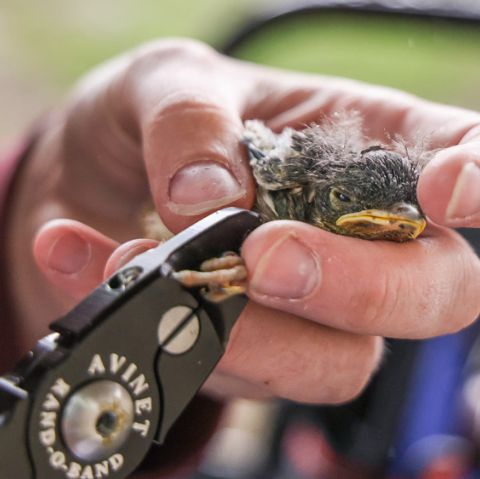Nashville Zoo‘s bird team has been monitoring bluebird populations via nest boxes since 2021. Rachel Payton, a bird keeper, has now received her federal and state bird banding permits, allowing her to collaborate with birds on Zoo property and gain information about their life, including sex, age, how far it travels, and how long it lives. The project will target native bluebird populations on the Zoo’s 188 acres. As the bird team continues to track and research these bluebird populations, they can provide accurate and appropriate recommendations to protect this species best.
Introduction
Native bluebirds are a common sight in the United States and Canada. Known for their striking blue color and melodic songs, these birds are a delight to watch and hear. However, their populations have been declining since the mid-twentieth century due to various factors such as habitat destruction and competition from invasive species. In recent years, many conservation efforts have been made to help revive native bluebird populations. One such attempt is using research to understand and track their people.
Researching Native Bluebird Populations
There are several ways researchers have studied native bluebirds. One of the most common methods is bird banding. This involves placing a small, numbered band on a bird’s leg, which can be used to track individual birds over time. Researchers can use this data to estimate population sizes, survival rates, and movement patterns.
Another research method is to study bluebird nest boxes. Bluebirds prefer to nest in cavities, such as those found in dead trees or old fence posts. Researchers can place nest boxes in suitable habitats and monitor how many bluebirds use them. This information can help estimate breeding success and habitat preferences.
Surveys can help researchers identify areas where bluebirds thrive or need conservation efforts. Researchers also conduct bird surveys to locate bluebird populations. These surveys can be achieved by using satellite imagery to identify suitable habitats or by traveling to known bluebird locations and leading visual and auditory surveys.
Implications
The information gained from research on native bluebirds can be used to inform conservation efforts. For example, if researchers find that bluebirds are not nesting in certain areas, conservationists may prioritize restoring or preserving those habitats. Additionally, if researchers find that specific populations are declining, conservationists may focus on protecting them through predator control and habitat restoration.
Conclusion
Native bluebirds are an essential part of the ecosystem and bring joy to those who observe them. Research can be crucial in understanding native bluebird populations and guiding conservation efforts. By studying bluebirds through bird banding, nest box monitoring, and bird surveys, researchers can gain valuable insights into these beloved birds and help ensure their continued survival.


